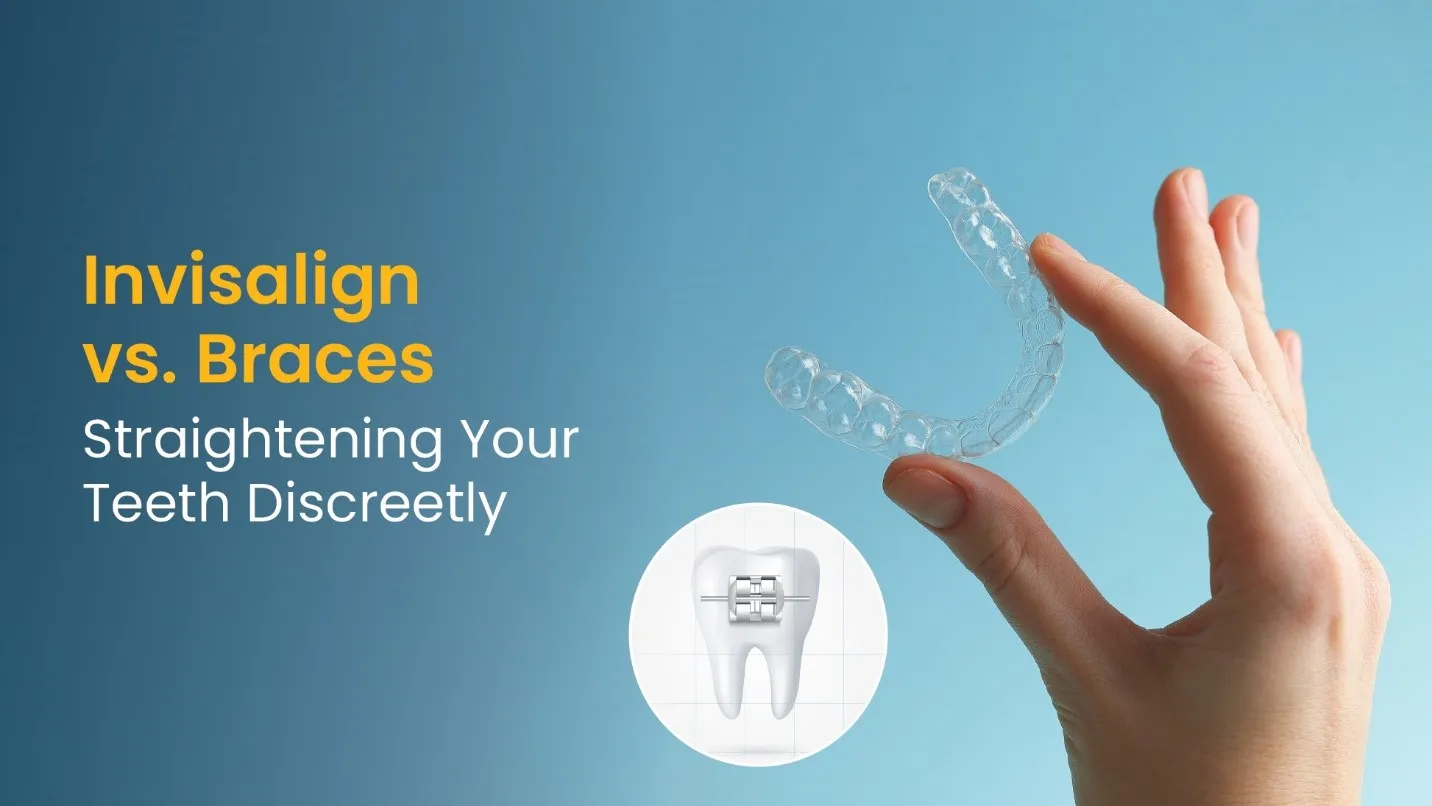Invisalign vs. Braces: Straightening Your Teeth Discreetly
October 31, 2024
Trying to make a choice between traditional braces and invisible aligners? This article can shed some light on the differences, to help you make an informed decision.
Both treatments are corrective, and a permanent solution for:
- Crooked teeth
- Crowded teeth
- Teeth with gaps
- Teeth with malocclusion (issues with the way teeth fit into each other)
Braces:
Traditional braces have been the most commonly used treatment method for years, especially for children. During the course of the treatment, they are fixed to the teeth, and using systematic pressure over specific teeth, braces bring them into correct positions over time.
One can choose from metallic, ceramic or lingual braces.
While metallic braces are visible when a person speaks or smiles, lingual braces are fitted on the surface behind the teeth, and cannot be seen.
Though uncomfortable, braces are preferred especially for young children, as they are fixed.
There are food restrictions and oral hygiene discipline required, when opting for braces. However, they don't need to be removed before eating, and won't be neglected if children forget to wear them back.
This ensures that the treatment progresses on schedule and the teeth straighten correctively.
Invisible aligners:
In recent years, clear / invisible aligners have come into popularity, and more and more adults have chosen to opt for them so that can beautify their smiles, and step out into the world with confidence.
Clear aligners are invisible, removable fittings made to correct the alignment of teeth. A few reasons why more people are opting for invisible aligners are:
- They are discreet, and even when worn, cannot be noticed by others unless they're already aware or standing very close to you.
- Adults at any age can opt for clear aligners, and have an excellent chance at enhancing their smile.
- The aligners fit exactly above the teeth, as they are custom designed and cast into shape accordingly.
- They are not painful, as there are no wires or metal pieces stuck to the teeth, which can be felt inside the mouth while wearing braces.
- There are no food restrictions, as the aligners are to be removed before meals. Unlike with braces, people can eat crunchy, chewy or hard foods with worrying about unduly impacting them.
- As they are custom fit, and a new set of aligners is fitted every few weeks, the alignment of teeth falls into place as per schedule, as long as a person wears their aligners for at least 20 hours a day.
- The entire treatment proceeds discreetly, and a person's smile is transformed within the next 6 to 24 months, depending on the case of the person's original teeth and how much alignment and correction are required.
Both methods of corrective alignment of teeth have their pros and cons, and having a detailed discussion with the dentist can clear one's doubts and help you select what is best suited for you. Either way, a beautiful new smile awaits you, once you decide.
To know more about discreet teeth straightening via braces and aligners, contact: 18001020288















































